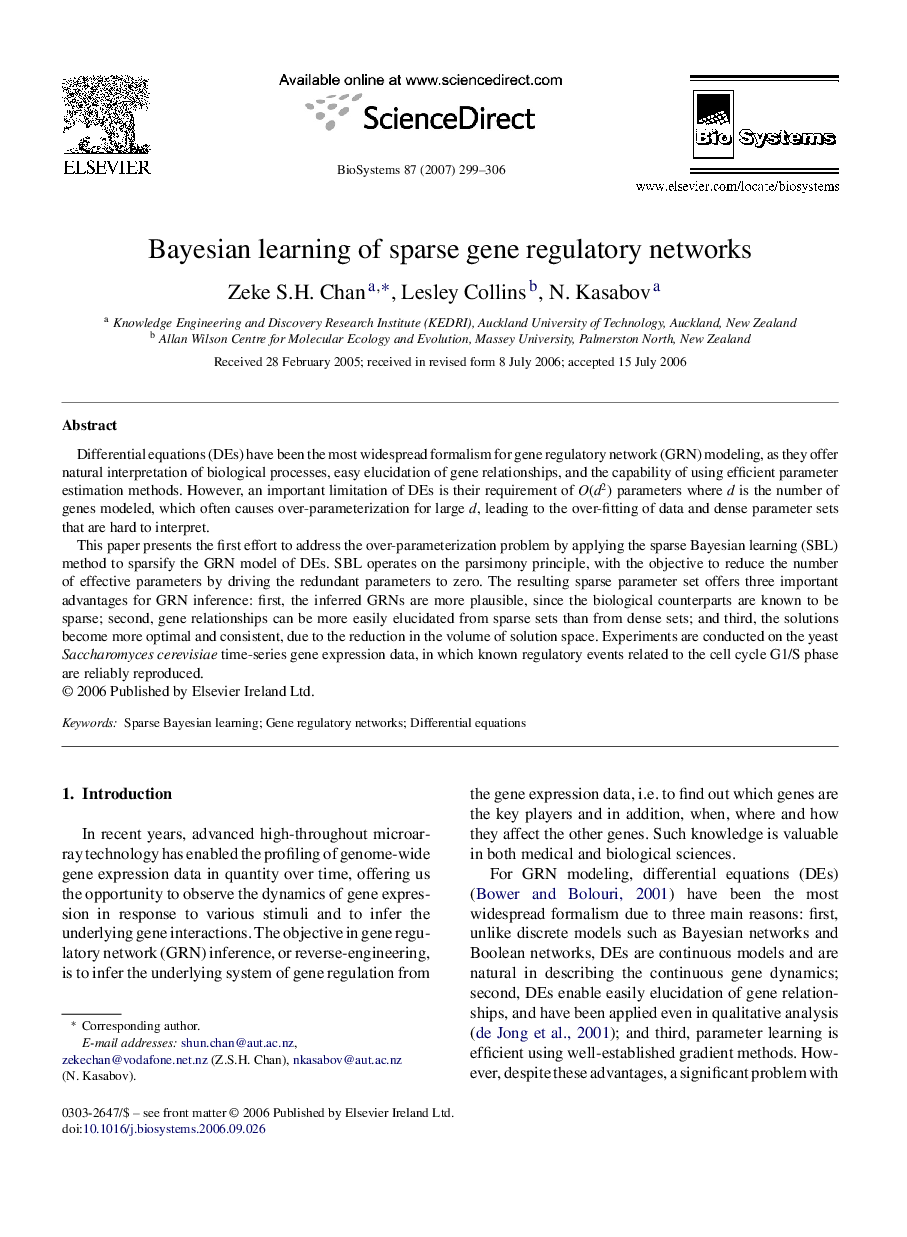| Article ID | Journal | Published Year | Pages | File Type |
|---|---|---|---|---|
| 2076988 | Biosystems | 2007 | 8 Pages |
Differential equations (DEs) have been the most widespread formalism for gene regulatory network (GRN) modeling, as they offer natural interpretation of biological processes, easy elucidation of gene relationships, and the capability of using efficient parameter estimation methods. However, an important limitation of DEs is their requirement of O(d2) parameters where d is the number of genes modeled, which often causes over-parameterization for large d, leading to the over-fitting of data and dense parameter sets that are hard to interpret.This paper presents the first effort to address the over-parameterization problem by applying the sparse Bayesian learning (SBL) method to sparsify the GRN model of DEs. SBL operates on the parsimony principle, with the objective to reduce the number of effective parameters by driving the redundant parameters to zero. The resulting sparse parameter set offers three important advantages for GRN inference: first, the inferred GRNs are more plausible, since the biological counterparts are known to be sparse; second, gene relationships can be more easily elucidated from sparse sets than from dense sets; and third, the solutions become more optimal and consistent, due to the reduction in the volume of solution space. Experiments are conducted on the yeast Saccharomyces cerevisiae time-series gene expression data, in which known regulatory events related to the cell cycle G1/S phase are reliably reproduced.
